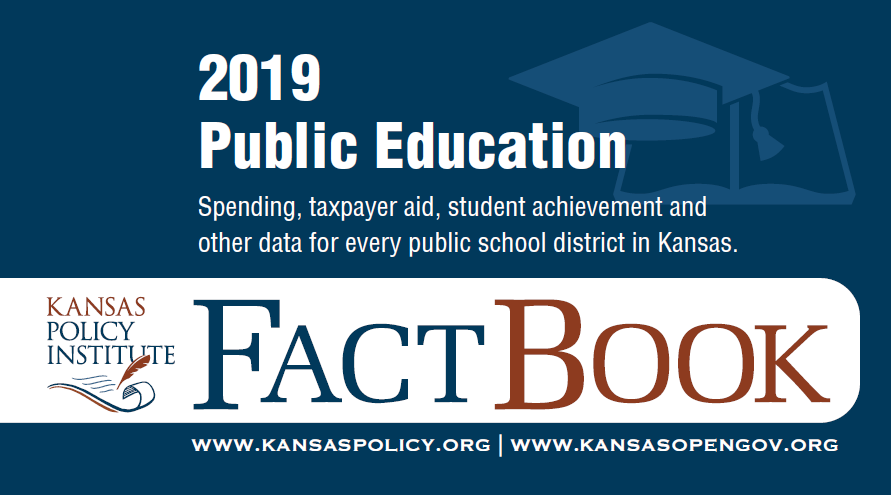To say there is a lot of public education data out there would be an understatement. Data on spending, revenues, student achievement, and personnel is all over the place. Wouldn’t it be great if all that pertinent data was in one easy to access location? Well, it is. KPI has just released the 2019 Public Education FactBook. The resource is chock full of the most recent data on overall spending, per-pupil spending, sources of revenue, assessment results, number of teachers and administrators and too much more to detail here. And it’s not just for one year. Much of the information presented goes as far back as the 1990s…in some cases as far back as the data set runs.
All data comes from official sources. Most of it is from the Kansas State Department of Education. Other information is gleaned from federal sources. The only non-government information is from ACT, the test taken by many would-be college students.
A few examples of the type of information that can be found in the FactBook:
-> Per-pupil spending is set to exceed $14,000 for the first time this year. That’s more than double the amount 20 years ago.
-> Per-pupil spending is more than $4,000 above inflation since 1992.
-> The 286 districts combined had carryover cash balances – money that could have been spent in the classroom but districts chose not to – totaled over $950 million in 2019!
-> Spending, funding, enrollment, employment, carryover cash, 10th grade state assessment, and ACT results are reported for each of the 286 school districts.
Data from the FactBook also dispels the claim that Kansas is a top-ten rated school when compared to the other states. Comparative results for the National Assessment of Educational Progress (NAEP) and ACT shown in Tables 12 and 13 tell a different story. In the eight NAEP categories of 4th and 8th grade reading and math for low-income and non-low-income students, Kansas ranks range from 15th to 30th. ACT composite scores for the entire state and racial subgroups are all ranked in the mid-20s.
I especially recommend the FactBook for educators. As a former public school teacher, I know first-hand how much incomplete or false information is spread about. A good example is that schools claim they are not getting enough funding, there’s no money, etc. etc., yet the FactBook tells the true story that the districts are sitting on literally millions of dollars, in the form of carryover cash reserves. Here’s another. We were often told that increases in education funding is really due to the fact that the state has just started counting KPERS. Table 3 in the FactBook debunks that myth. In fact, KPERS payments have been counted for years and it is truly only a relatively small amount of overall education spending.
As of this writing, a digital version of the FactBook is available by following the above link. Drop KPI a line to request your free copy as well. It is a great research tool to have at your disposal and is easy to carry. And despite sounding as if it would be very bulky, it’s actually only about the size of your phone.





